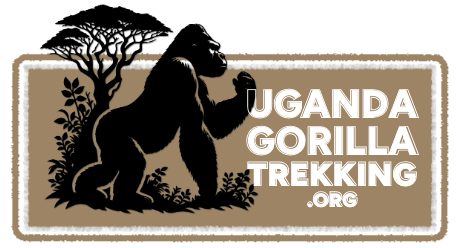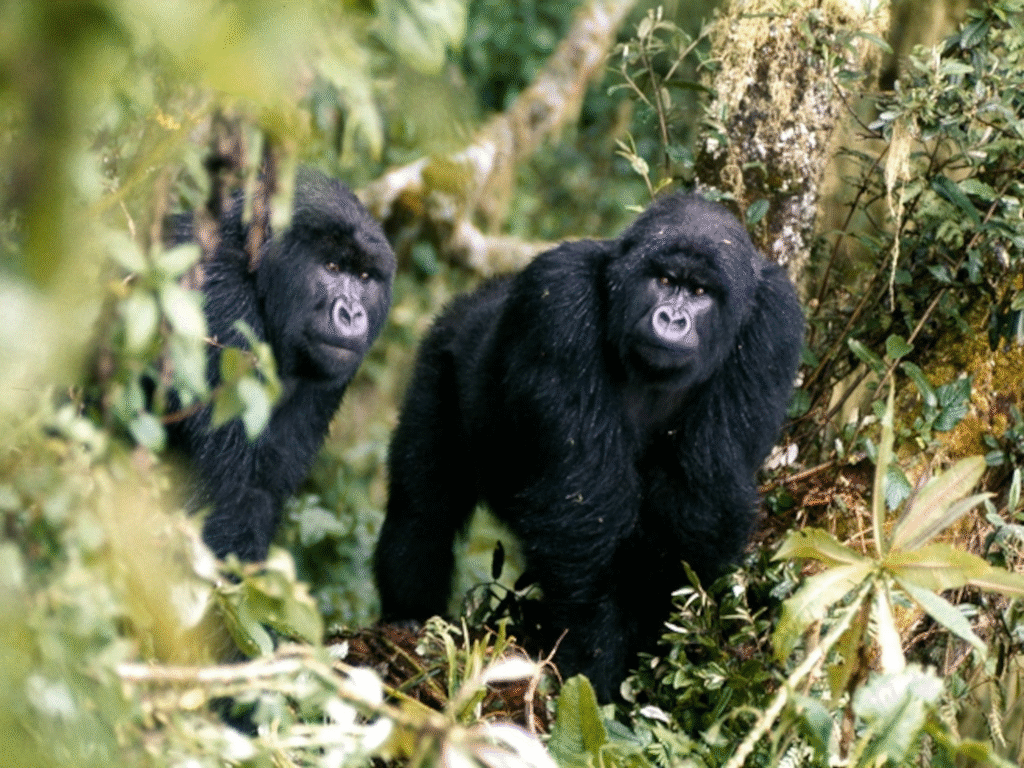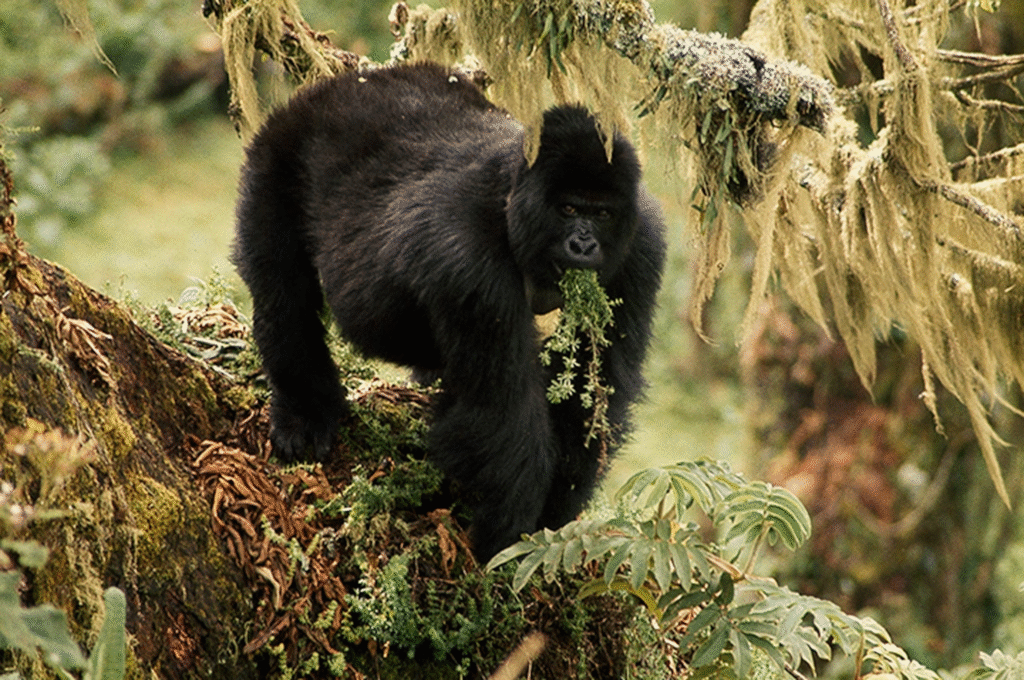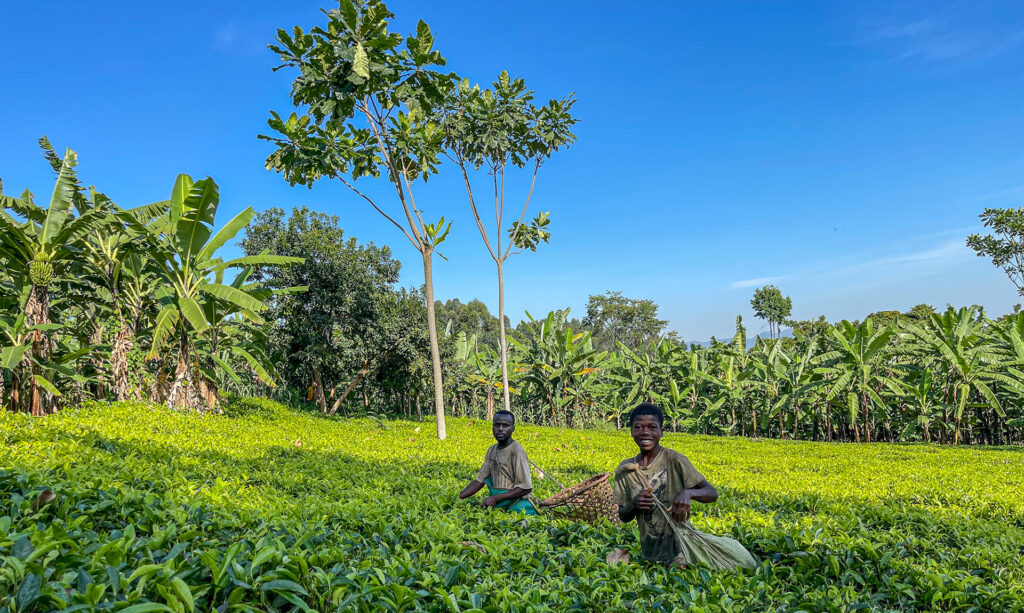Where the soul of the forest whispers in the mist
Planning a gorilla trekking experience in Uganda is as thrilling as it is life-changing—but it also comes with important questions every traveler deserves answers to. From how to secure your permit to what to pack, what fitness level is required, and what encounters with gorillas actually feel like, this guide unpacks all the essential details. Uganda’s dense forests and mist-covered mountains are home to more than half of the world’s remaining mountain gorillas, making it one of the most sought-after wildlife experiences on the planet. Whether you’re a first-time trekker or a returning adventurer, having the right knowledge makes the journey smoother, safer, and more meaningful.
This comprehensive Gorilla trekking FAQs and travel tips guide covers everything you need to know before setting foot in Bwindi Impenetrable or Mgahinga Gorilla National Parks. It’s not just about logistics—it’s about preparation, expectations, respect for nature, and understanding the impact your visit has on conservation and local communities. From the best times to go and how to dress, to understanding gorilla behavior and staying healthy during your trip, you’ll find clear, updated insights that let you focus on what truly matters: the awe of standing a few feet from a wild silverback, in one of the last places on Earth where that’s still possible.
So lace up your boots, grab your camera, and prepare to meet the wild — this is where your gorilla trekking dreams and unforgettable safari adventures truly begin.
Truly Iconic Highlights in Uganda
Trek through Bwindi’s mystical rainforest and meet the endangered mountain gorillas in their breathtaking natural home.
Encounter mountain gorillas and golden monkeys on Mgahinga’s misty volcanic trails, where culture and alpine wildlife thrive together.
Unwind after your trek with a peaceful canoe ride across Lake Bunyonyi, Uganda’s most tranquil and scenic highland lake.
Enhance your gorilla trekking safari with an optional chimpanzee encounter in Uganda’s lush forests, adding depth and diversity to your primate adventure
Frequently Asked Questions About Gorilla Trekking in Uganda
Does it cost to see gorillas in Uganda?
Yes. Gorilla trekking in Uganda requires a gorilla permit, which currently costs $800 for international tourists, $700 for foreign residents, and UGX 300,000 for East African citizens. This fee grants you one hour with a habituated gorilla family and includes guide and ranger services.
Where can you find gorillas in Uganda?
Uganda’s mountain gorillas live in Bwindi Impenetrable National Park and Mgahinga Gorilla National Park, both located in the country’s southwest region. Bwindi has multiple sectors with over 20 gorilla families, while Mgahinga is home to the Nyakagezi group.
How do I book a gorilla trek in Uganda?
You can book your trek through a licensed tour operator or directly through the Uganda Wildlife Authority (UWA). Booking with a tour company is often easier as they also handle your accommodation, transport, and sector alignment based on permit availability.
What should you wear on your gorilla tour in Uganda?
Wear long-sleeved shirts, long pants, waterproof hiking boots, a rain jacket, gardening gloves, and neutral colors. The forest is dense and can be muddy or rainy, so protective and moisture-resistant clothing is essential.
What are the gorilla tracking rules?
Some of the most important rules include:
- Maintain a 7-meter distance from gorillas.
- Do not touch the gorillas.
- No flash photography.
- Stay quiet and avoid sudden movements.
- If you’re sick (even with a cold), you cannot trek.
- Treks are limited to 8 people per gorilla family per day.
What is the best time to see gorillas?
The dry seasons—June to September and December to February—offer the best conditions. Trails are drier and gorillas tend to stay at lower altitudes. However, trekking is possible year-round, and rainy season treks often feel more primal and mystical.
What is the best place to see gorillas in Uganda?
All sectors offer magical encounters, but Rushaga and Nkuringo in southern Bwindi are most accessible from Kigali and have many gorilla families. Mgahinga is best for a quieter trek and scenic volcano views.
Is it safe to visit gorillas in Uganda?
Yes. Uganda is considered one of the safest destinations in Africa, and gorilla trekking is tightly regulated by trained rangers and guides. The gorillas are habituated to humans, and treks are escorted with high safety protocols.
How do I get to Bwindi Forest Park?
You can access Bwindi by:
Road: 8–10 hours from Entebbe or 4–5 hours from Kigali.
Air: Fly to Kihihi or Kisoro airstrips via domestic flights from Entebbe, then transfer to your lodge.
How difficult is it to track gorillas?
The trek can range from moderate to strenuous, depending on the gorilla family’s location. Some trails involve steep climbs, thick forest, or mud, but most healthy adults can complete the trek with determination. Porters and walking sticks are highly recommended.
Is a gorilla permit refundable?
No. Gorilla permits are non-refundable and non-transferable, except under extreme health conditions verified by UWA, and even then, postponement—not refund—is more likely.
How much is a gorilla permit?
As of 2025:
$800 – International visitors
$700 – Foreign residents
UGX 300,000 – East African citizens
Why is gorilla trekking expensive?
Gorilla conservation is costly. Funds from permits support anti-poaching, research, ranger salaries, community projects, and forest preservation. This tourism model has saved mountain gorillas from extinction.
Is gorilla trekking safe?
Yes. Rangers are trained to handle treks and behavior in the presence of gorillas. Physical aggression is rare due to proper habituation. However, it’s important to respect all instructions for everyone’s safety.
What are the top tracking sectors in Bwindi?
Rushaga – Many gorilla families; also offers the gorilla habituation experience.
Nkuringo – Remote, scenic, and physically demanding.
Buhoma – The original sector, more accessible from northern Uganda.
Ruhija – Peaceful and great for birders.
How many gorilla families are in Bwindi Impenetrable Forest?
Bwindi is home to 20+ habituated gorilla families, divided across four sectors: Buhoma, Ruhija, Rushaga, and Nkuringo. Each family can only be visited by one group of tourists per day.
Is gorilla trekking hard?
Yes and no. It depends on your fitness level, trekking sector, and weather. Some treks are short and easy, others involve hours of climbing. With the right mindset and porter support, most visitors successfully complete their trek.
Is a permit required to track gorillas?
Absolutely. No permit, no trek. Each trekker must have a permit issued for a specific gorilla family and sector on a specific day.
What’s the best gorilla tracking sector in Bwindi?
Rushaga is great for accessibility and variety. Nkuringo offers epic views and fewer tourists. Your choice depends on permit availability, trek difficulty, and your preferred lodge location.
What are the chances of seeing gorillas in Bwindi?
Very high—nearly 98–100%. Rangers track the gorillas at dawn and guide your group accordingly. Missing them is extremely rare.
How many gorillas are in Bwindi Forest?
Bwindi protects over 450 mountain gorillas, the largest population in a single forest. This includes both habituated and unhabituated groups.
Where should I stay on a gorilla tour?
Stay near your permit sector! Top lodge areas:
Buhoma – Mahogany Springs, Bwindi Lodge
Rushaga – Four Gorillas Lodge, Rushaga Gorilla Camp
Nkuringo – Clouds Mountain Lodge, Nkuringo Bwindi Lodge
Mgahinga – Mount Gahinga Lodge, Lake Mulehe Safari Lodge
How do I book a full gorilla tour?
You can book through a registered Uganda tour company that arranges:
- Gorilla permits
- Transport
- Accommodation
- Park fees and meals
How long is a typical trek?
Treks range from 30 minutes to over 6 hours, depending on gorilla location. You may walk for 2–4 hours on average.
What is the gorilla tracking procedure?
Report to the park headquarters at 7:30 AM for briefing.
Join your assigned group (max 8 people).
Follow rangers into the forest.
Once gorillas are found, you get 1 full hour with them.
Return to base and receive a certificate of participation.
What should I pack for gorilla trekking?
Essentials include:
- Long-sleeved clothing
- Waterproof hiking boots
- Rain jacket
- Gloves
- Hat
- Insect repellent
- Walking stick
- Snacks and water
Can I trek Uganda gorillas from Kigali?
Yes! This is a popular option. Kigali to southern Bwindi or Mgahinga takes 4–5 hours, making it the fastest and most cost-effective way to reach Uganda’s gorillas.
Difference between gorilla trekking in Uganda vs Rwanda?
Cost: Uganda ($800), Rwanda ($1,500)
Landscape: Uganda – thicker rainforest; Rwanda – bamboo volcano slopes
Accessibility: Rwanda is closer to airport; Uganda offers more budget options
Experience: Both are exceptional; Uganda has more gorilla families and trekking sectors.
Are mountain gorillas friendly?
Mountain gorillas are gentle and peaceful, especially when habituated. They ignore respectful human visitors and rarely show aggression unless threatened.
What’s the minimum age for trekking?
15 years old. No exceptions, as per Uganda Wildlife Authority rules.
What is the cost of a full gorilla safari?
Depending on the length and comfort level:
Budget: $1,200–$1,600
Mid-range: $1,700–$2,500
Luxury: $3,000–$6,000+
Travel Tips for Gorilla Trekking in Uganda
- Book early: Permits are limited. Reserve at least 3–6 months in advance.
- Choose your sector wisely: Your accommodation must match your trekking permit location.
- Hire a porter: Not only do they carry your bag, they support local livelihoods.
- Be honest about your fitness: Rangers assign groups based on ability if informed.
- Support eco-lodges: Many help protect the forest and uplift nearby communities.
- Bring cash: ATMs are scarce near the parks.
- Use East African Visa: If entering via Kigali, get the multi-country visa for ease.
- Respect the rules: The gorillas’ safety comes before selfies.
- Stay a night after the trek: You’ll want to rest, reflect, and relive the moment.
What is a silverback?
A silverback is a dominant adult male gorilla, named for the silver hair on its back. He leads the family, protects it, and makes all group decisions.
How long do baby gorillas stay with their mothers?
Infants stay with their mothers for 3–4 years, often nursing for the first two and riding on her back. Families are tightly bonded.
Ready to Meet the Gorillas?
Your journey into the jungle is more than a safari—it’s a story waiting to be lived. Now that you’re armed with the knowledge, the insight, and the tips, all that’s left is to step into the mist.
More FAQs & Travel Tips Information to Know.
Even the smallest details can make a big difference when preparing for your gorilla trekking adventure in Uganda. From knowing how altitude might affect you to understanding trekking etiquette and cultural respect, these extra insights help ensure your journey is not only unforgettable—but also thoughtful and well-informed.
In the Realm of Giants – Bwindi & Mgahinga in Frames.
Wander through an elegant gallery capturing Uganda’s most exclusive gorilla sanctuaries, where ancient forests cradle the last mountain gorillas in a world of mist, mystery, and majesty.
Essential Planning Tips for Visiting Uganda’s National Parks.
Get ready for the wild heart of Africa with expert travel tips on when to visit, what to pack, where to go, and how to make the most of your safari across Uganda’s breathtaking national parks.
Why Uganda for Gorilla Trekking?
Uganda is not just a destination — it's the very soul of gorilla trekking. With over half of the world’s remaining mountain gorillas calling its misty forests home, Uganda offers the rarest encounters in their most authentic setting. Here, your journey is not rushed or crowded. Instead, you’re guided by experienced rangers through pristine jungles where gorillas live as they always have — wild, free, and magnificent
From insider travel insights to unforgettable trekking guides, our blog is your trusted path into Uganda’s wild heart — connecting you with mountain gorillas, breathtaking landscapes, and the soul-stirring adventures that make this land unlike any other.





